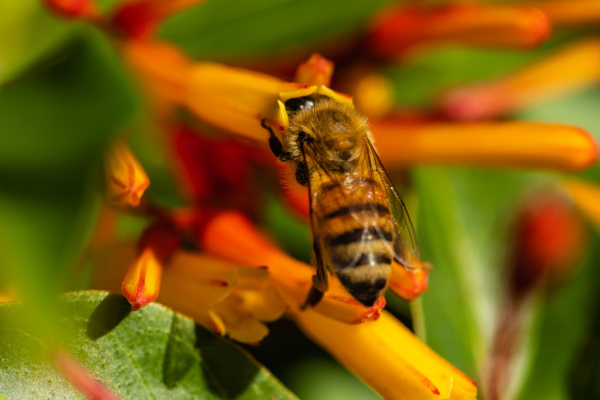This summer has been the toughest in decades on Southwest Florida beekeepers, who were hit hard last month by powerful Hurricane Ian.
As The Palm Beach Post reports, Ian came at a particularly bad time because beekeepers and honey producers rely on the late summer/early fall Brazilian pepper bloom. Now many of those Brazilian pepper trees are flowerless, which means the bees have little food on the landscape.
Brazilian pepper trees are actually an invasive plant, but the South Florida bees thrive off them this time of year. In fact, the Brazilian pepper season is so fruitful that beekeepers from the Midwest and California bring their hives here each fall.
“A lot of the honey bees are out foraging for pollen and nectar, and a lot of the beekeepers around the nation keep their nation and down here (at this time of year),” said Rene Pratt, whose family owns the Harold P. Curtis Company in Labelle. “And they come for Brazilian pepper tree but the hurricane blew those blooms off and that means there’s nothing for the bees.”
“This is the worst year in 64 years we’ve had,” said Pratt, adding, “We’re already short on bees because the bees are in bad shape already. So there’s not enough bees to pollinate these fruit crops.” So instead of harvesting tons of the sweet, golden goodness, bee farmers are salvaging hives and starting from scratch.
Keepers bring about 150,000 colonies of bees to South Florida each fall. “This is going to be a big deal for them because you have to start all over,” Pratt said. “They won’t get fall honey, but they’ll try to build up the bees for spring. It’s about a year to start a hive until it really starts producing.”
Locally, bees and beekeepers were hit hard by Ian.
According to The Palm Beach Post, Florida is home to more than 5,000 beekeepers who watch more than 700,000 colonies. Lee County has the seventh-highest number of commercial beekeepers in the Sunshine State at 179, according to Florida Department of Community Services.
Amy Vu, with the University of Florida’s Honey Bee Research and Extension Laboratory, said Hurricane Ian treated bee hives about the same way as some homes and structures. “The hurricane winds came and knocked over their homes,” Vu said. “It’s the same thing as it did with human to homes. They just get completely crushed.”
Most commercial hives consist of a box with frames inside. There’s typically one entrance, and it’s at the bottom of the hive. “They have low-lying areas and they have an entrance and an exit and the water fills in and that often results in honey bee drowning,” Vu said. “And now, with a lack of flowers, they’re not able to forage to survive the winter. So what’s really been important is supplying those bees with feed.”
Gene McAvoy, with UF’s agriculture extension in Labelle said he lost a few hives at his home. “I’m hearing hives were drowned and tops were blown off and they were exposed to the wind and rain,” McAvoy said of conditions during the storm. “Bees can’t take that intense pounding rain for hours without some type of cover.”
—
Photo Credit: Sadie Mantell / Shutterstock.com
